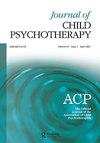社论
IF 0.8
Q4 PSYCHOLOGY, CLINICAL
引用次数: 0
摘要
本期的论文代表了我们作为治疗师在数字时代道德出版的约束下写我们的作品时所采用的一系列方法。在我写这篇文章的时候,我们《儿童心理治疗杂志》正在组织一个关于出版临床材料的当代挑战的研讨会,我想通过评论每篇论文的这一方面来强调我们将在研讨会上探讨的一些问题,我在这里介绍它们。本期有许多关于自闭症儿童工作的论文。我们有Robin Holloway三联画的最后一部分,还有Sheila Levi分两部分讲述的一个两岁时被诊断为自闭症的小男孩的强化治疗。这些论文表明,当我们密切关注临床现象的细节时,我们得到了多么丰厚的回报。这些论文赞扬了儿童心理治疗师对我们的案例的强烈好奇心和承诺,以及我们从患者身上学到的东西。由于需要寻求知情同意,我们无法像过去那样发表这么多此类案例研究,而知情同意并不总是合适或可能获得的。然而,在这三份文件中,都给予了知情同意。在Sheila Levi的论文中,这位患者多年前读到他的治疗时还是个年轻人。他的母亲报告说,他非常欣赏阅读这本书,但人们想知道,更具体地说,他欣赏什么,是什么促使他允许自己的故事在印刷品中分享。霍洛威的病人在寻求同意时仍在接受治疗。这三篇论文中的第一篇提到了这种情况的复杂性,但当你阅读这些论文时,你会感觉到治疗,包括围绕同意的讨论,是一种合作。当霍洛威在研讨会上的演讲中详细阐述这段经历的变迁时,我们会发现更多。我们所知道的是,这篇论文充满了他的病人“山姆”,他在同意分享的许多图纸中跃出页面。然而,我认为这也与Holloway设法将患者呈现为一个完整的人,而不是一个病理组织的集合有关。他用副标题来表示他正在用他所说的“理论插曲”打断“山姆”的故事,这是对患者经历的致敬。Holloway在他的三联画结束时回顾了精神分析理论为阐述自闭症及其病因所做的各种尝试。我觉得这是一个特别生动和引人入胜的展览。Sheila Levi的第一篇论文聚焦于使用由强化心理治疗制成的年轻“陶”来帮助他放弃自闭症防御。她的第二篇论文探讨了她与家人和网络的合作,以支持他们放松对他的自闭症诊断的投资。李维关于父母夫妇关系中支持发展的因素的论点可能会让我们的许多读者感到震惊,因为《儿童心理治疗杂志2022》,第48卷,第1,1-5号https://doi.org/10.1080/0075417X.2022.2044371本文章由计算机程序翻译,如有差异,请以英文原文为准。
Editorial
The papers in this issue represent a range of approaches we, as therapists, adopt when writing about our work within the constraints of publishing ethically in the digital age. As I write this, we at the Journal of Child Psychotherapy are organising a symposium on the contemporary challenges of publishing clinical material, and I want to highlight some of the issues we will explore at the symposium, by commenting on that aspect of each paper, as I introduce them here. In this issue there are a number of papers about work with children with autism. We have the final part of Robin Holloway's triptych, and Sheila Levi's two-part narrative of the intensive treatment of a young boy diagnosed with autism at two years of age. These papers demonstrate how richly repaid we are when we engage closely with the details of clinical phenomena. These papers celebrate child psychotherapists’ deep curiosity and commitment to our cases, and what we learn from our patients. We are not able to publish as many of these sorts of case studies as we did in the past because of the need to seek informed consent, which isn't always appropriate or possible to obtain. However, in these three papers, informed consent was given. In Sheila Levi's paper, the patient was a young man when he read about his treatment all those years before. His mother reported that he appreciated reading it a great deal, but one wonders what, more specifically, he appreciated and what motivated him to allow his story to be shared in print. Holloway's patient was still in treatment at the time consent was sought. The complexities of this situation were touched upon in the first of the three papers, but you sense when reading these papers that the treatment, including the discussions around consent, was a collaborative endeavour. We will find out more when Holloway expands on the vicissitudes of this experience in his presentation at the symposium. What we do know is that this paper is alive with his patient ‘Sam’, who leaps out of the pages through the many drawings he consented to share. However, I think this also has something to do with the way Holloway manages to present his patient as a whole person, rather than a collection of pathological organisations. The way he uses subheadings to signal that he is interrupting ‘Sam's’ story with what he terms ‘theoretical interludes’ is part of this honouring of the patient's experience. Holloway ends his triptych with a review of the various attempts psychoanalytic theory has made to formulate autism and its aetiology. I find it a particularly lively and engaging exposition. The first of Sheila Levi's papers focuses on the use young ‘Tao’ made of intensive psychotherapy to help him relinquish his autistic defences. Her second paper explores her work with the family and network to support them in loosening their investment in his autism diagnosis. Levi’s argument about what it was in the parental couple’s relationship that supported development is likely to strike many of our readers as heteronormative JOURNAL OF CHILD PSYCHOTHERAPY 2022, VOL. 48, NO. 1, 1–5 https://doi.org/10.1080/0075417X.2022.2044371
求助全文
通过发布文献求助,成功后即可免费获取论文全文。
去求助
来源期刊

JOURNAL OF CHILD PSYCHOTHERAPY
PSYCHOLOGY, CLINICAL-
CiteScore
0.70
自引率
50.00%
发文量
46
期刊介绍:
The Journal of Child Psychotherapy is the official journal of the Association of Child Psychotherapists, first published in 1963. It is an essential publication for all those with an interest in the theory and practice of psychoanalytic psychotherapy and work with infants, children, adolescents and their parents where there are emotional and psychological problems. The journal also deals with the applications of such theory and practice in other settings or fields The Journal is concerned with a wide spectrum of emotional and behavioural disorders. These range from the more severe conditions of autism, anorexia, depression and the traumas of emotional, physical and sexual abuse to problems such as bed wetting and soiling, eating difficulties and sleep disturbance.
 求助内容:
求助内容: 应助结果提醒方式:
应助结果提醒方式:


